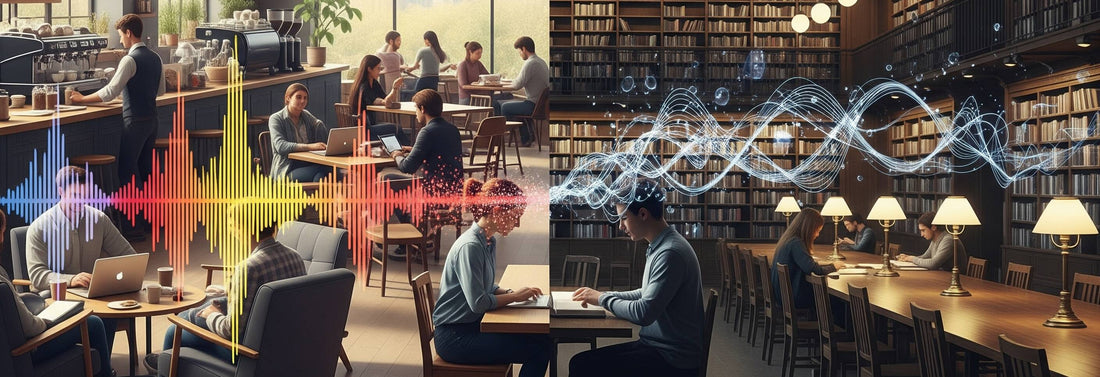
ASMR Study Café Ambience vs Library Ambience: Which Focuses Better?
Share
Generation Z is driving a massive surge in co-working spaces and study cafes, but the acoustic environments that actually optimize focus remain hotly debated. Research on ambient noise and cognitive performance reveals surprising insights about whether café buzz or library silence creates better conditions for deep learning and productivity.
The science points to medium noise levels as the sweet spot for cognitive control. Complete silence, like traditional libraries provide, can actually heighten internal distractions - you become hypersensitive to your own thoughts, bodily sensations, and tiny environmental sounds that break concentration. Moderate ambient noise, typical of well-designed cafes, provides just enough acoustic masking to prevent hyperfocus on distractions while maintaining clarity for mental tasks.
Studies consistently show that ambient noise around 70 decibels - the level of a busy but not overwhelming cafe - enhances creative thinking and problem-solving. This "optimal noise zone" disrupts normal thinking patterns just enough to promote flexible, innovative cognitive processing without creating the stress response that loud environments trigger.
Café Ambience: The Creative Catalyst
Coffee shop environments provide complex, layered soundscapes that keep your auditory cortex gently engaged without demanding conscious attention. The blend of espresso machine hiss, muffled conversations, chair scraping, and background music creates what researchers call "stochastic resonance" - random variations that actually improve signal detection and cognitive flexibility.
The social element of café ambience provides psychological benefits beyond pure acoustics. The presence of other people working and thinking creates what psychologists call "parallel productivity" - you're motivated by the collective focus energy around you, even though you're not directly interacting with anyone.
Café sounds work particularly well for:
- Creative writing and brainstorming sessions
- Problem-solving that requires innovative thinking
- Tasks where you need sustained motivation and energy
- Work that benefits from feeling connected to productive social energy
Library Ambience: The Deep Focus Chamber
Traditional library environments excel for tasks requiring sustained, detailed attention. The minimal acoustic variation allows your cognitive resources to focus entirely on complex mental processing without any background demands on your attention systems.
Library ambience works through what neuroscientists call "attentional narrowing" - your brain learns to filter out the few remaining sounds (page turns, whispered voices, footsteps) and achieves tunnel vision focus on challenging material. This makes libraries ideal for:
- Detailed reading and comprehension tasks
- Mathematical problem-solving requiring sustained logic
- Memorization and information consolidation
- Any work where external stimulation feels distracting rather than energizing
Personal Audio Solutions for Any Environment
Earbuds provide the perfect solution for students who want to control their acoustic environment regardless of physical location. You can access café ambience for creative tasks or library quiet for detailed work, all while remaining aware of your actual surroundings for safety and social connection.
The key is matching your audio environment to your cognitive demands rather than defaulting to one approach. Start your study session by honestly assessing whether you need creative energy or focused concentration, then choose your ambience accordingly.
Many students develop personalized playlists that transition from café energy during brainstorming phases to library quiet during execution phases. This audio flexibility allows you to optimize your cognitive state throughout extended work sessions without changing physical locations.
For students ready to take control of their acoustic learning environment, consider accessing both café and library ambience collections along with earbuds that keep you safely connected to your actual surroundings. The future of studying isn't about finding the perfect quiet space - it's about having the acoustic tools to create optimal cognitive conditions wherever learning needs to happen.
